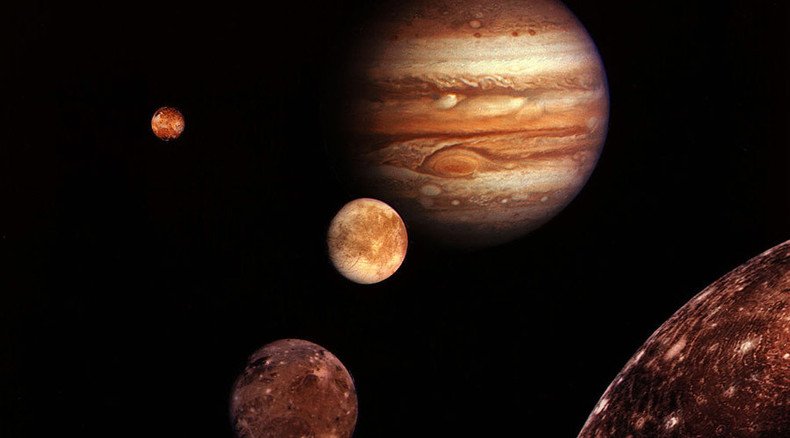Pan in the moon: NASA dares viewers to pick out Jupiter’s Europa amid frying skillets

It turns out it’s not so easy to tell the difference between a moon and a frying pan. NASA has challenged Twitter users to find Jupiter's Europa lost in the shuffle of frying pans, snapped by a Norwegian photographer.
NASA Europa mission has recently tweeted a shot of Jupiter's Europa embedded in a collage of eight dirty skillets of frying pans. The US scientists tried to draw attention to the simple fact that sometimes you don't have to go to space to find subtle beauty, hidden in familiar and trivial objects.
Europa or frying pan? One of these is Jupiter’s moon Europa, the rest are frying pans. pic.twitter.com/XqQn7uUwjW
— NASA Europa Mission (@NASAEuropa) August 21, 2015If you stumble to identify the moon, the answer can be found later in this article.
The “Devour” series of frying pan photographs were made by Norwegian photographer Christopher Jonassen, who defined it as “still life photography of worn-out frying pans.” The first part of the project was completed in 2013 and included nine photos, the second part was released this May and the work is still in progress.
READ MORE: Amazing video shows journey to Pluto through lens of NASA New Horizons spacecraft
Jonassen shot hundreds of planet-like frying pans over several years while studying in Australia, and eventually found the most intricate ones used by a local troop of Boy Scouts. “I found that each pan more or less had a planet hidden inside it,” Jonassen told Time magazine. “And it was up to me to discover it.”
He added that he wants to create “a link between the small traces we leave behind every day, [and] the enormous impact this adds up to over time. I am very concerned about the way we are treating this planet.”
Finally, "Devour II" is now published in full, on my website. It's been a lot of hard work and it has taken years...
Posted by Photographer Christopher Jonassen on Tuesday, 19 May 2015
The future NASA Europa mission will send a spacecraft orbiting the largest planet of the solar system, which will thoroughly study its moon in an attempt to find out whether its conditions could be suitable for life.
Jupiter's moon Europa, which is located middle left in the NASA’s puzzle, was discovered in 1610 by Galileo. The planet has 67 moons, but Europa stands out due to potential habitability, as it appears to have water and clay-like minerals.
The frozen, fissured surface of Jupiter's moon Europa, seen in a colorized mosaic image from the Galileo spacecraft pic.twitter.com/QFMF8oEWmD
— World and Science (@WorldAndScience) August 2, 2015











